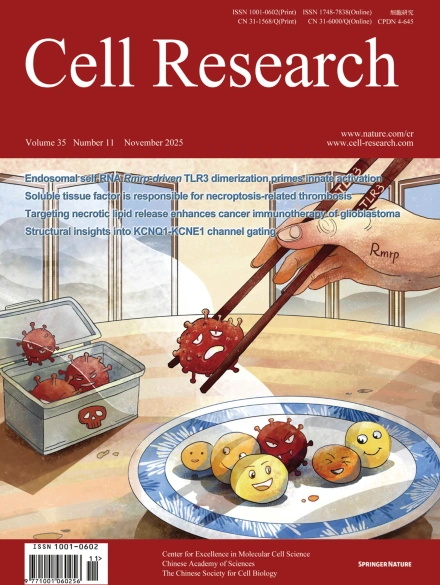
Advanced Search
Submit Manuscript
Advanced Search
Submit Manuscript
ISSN: 1001-0602
EISSN: 1748-7838
2020 impact factor 25.617*
(Clarivate Analytics, 2021)
About the cover
A single chopstick cannot pick up food, just as an individual TLR3 molecule cannot efficiently initiate innate immune activation on its own. Rmrp acts as the coordinating element that brings two TLR3 molecules together into a functional dimer, much like a hand uniting two chopsticks for coordinated action. See page 824–839 by Shikun Zhang et al. for details
ORIGINAL ARTICLES
The molecular basis of μ-opioid receptor signaling plasticityRESEARCH HIGHLIGHTS
Self-RNA Rmrp pre-dimerizes TLR3 for immune activationREVIEW ARTICLE
Trained immunity: induction of an inflammatory memory in diseaseORIGINAL ARTICLES
Molecular characterization of endosomal self RNA Rmrp-engaged TLR3 dimerization to prime innate activationLETTERS TO THE EDITOR
Constitutive arrestin recruitment by orphan GPR52 via an atypical binding mode